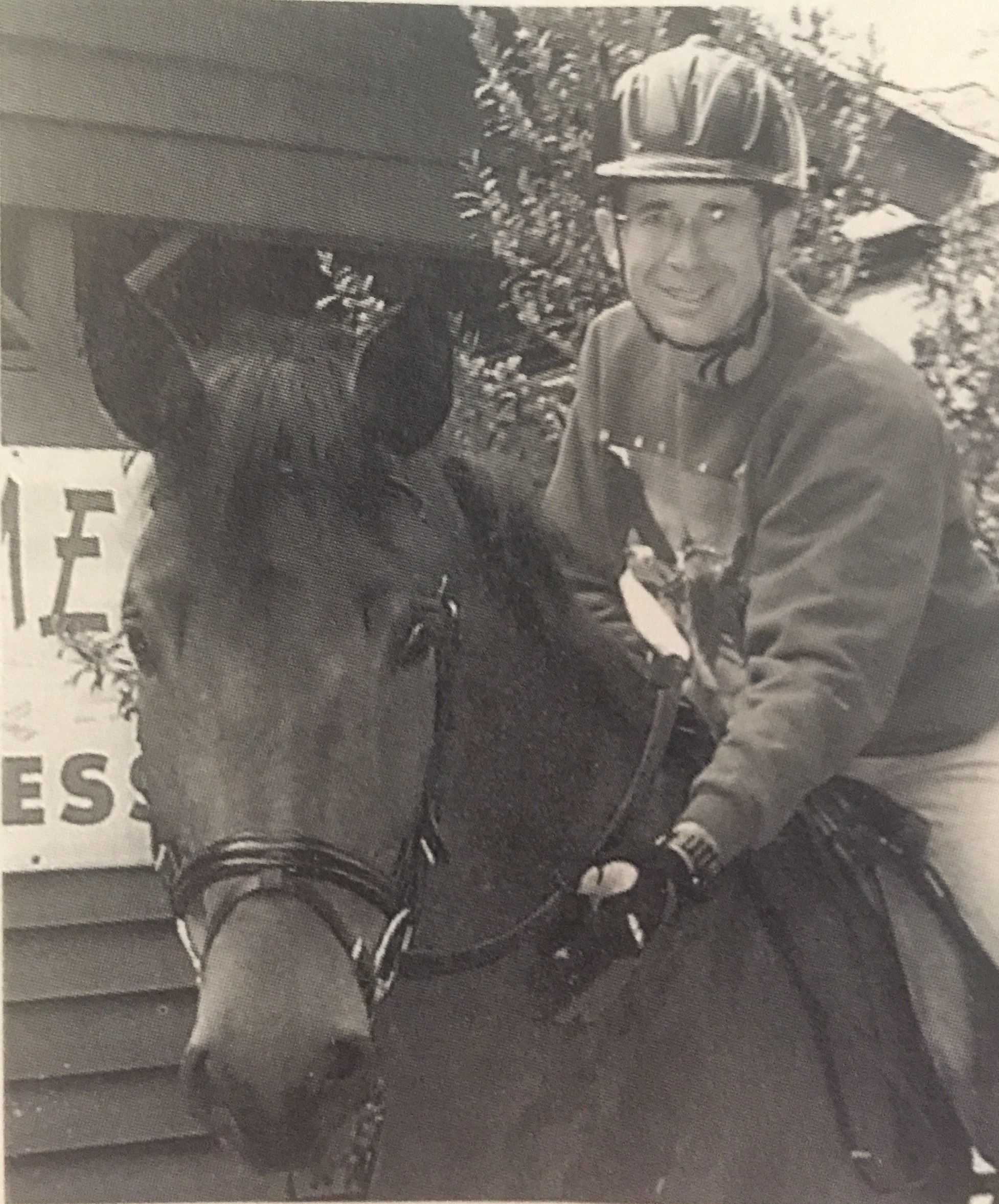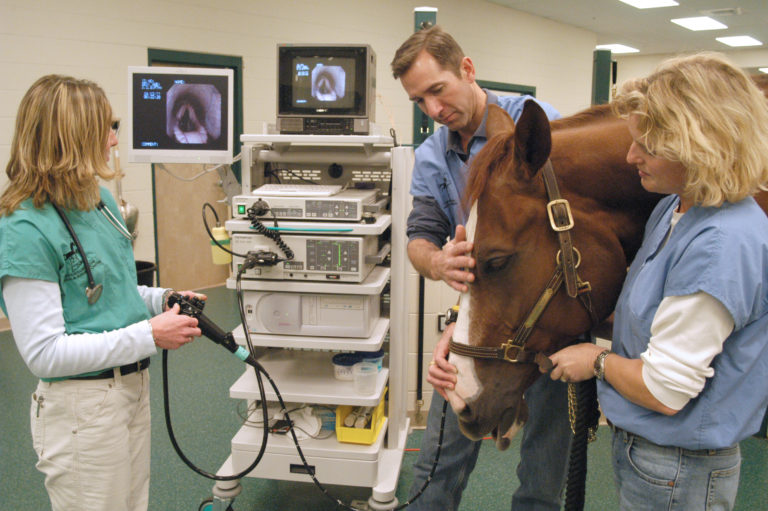Ok, I admit the title doesn’t seem to have much to do with riding a horse, but it does have a lot to do with half halts. Let me explain. I am a 45-year-old neurosurgeon from Atlanta, Georgia, and last week I did a half halt. This is a small task for many, but it has been a monumental task for me. One of my friends with a natural talent to ride horses said, “It isn’t brain surgery.” I can personally attest to the fact that it is harder. It took far less time and consumed far less energy to learn how to operate on a brain than to learn the half halt.

After several fitful starts, I bought a good horse. Declaration is a big Trakehner mare who knew the basics and had a kind brain. We spent hours in lesson after lesson, and at least twice as much time practicing what I was supposed to be learning. I had several instructors, read books and watched tapes. My riding ability progressed, but it progressed very slowly. Some days it seemed as if I had traveled to a foreign land where everyone knew how to speak “horse” but me. “Half halt! Half halt!” the instructor would yell across the arena. Try as I might, I did not know what that meant. To my amazement, one of my instructors went so far as to holler, “Now half halt on the right rein only.” When I asked what that command meant in English, I got the same textbook explanations. It is a rebalancing of the horse. It shifts the weight off the forehand and onto the hindquarters. I, too, could repeat the words, but I really had no earthly idea what she was talking about.

It was at the start of this summer that I began to ride with Michelle Gibson. Michelle is from the Atlanta area, and I remember watching her ride in the 1996 Olympics. She is a local hero and was perhaps my last and best hope to understand what should happen when someone yells “half halt” at you. Nervous? You bet. I was too dense to grasp even a simple horse concept like half halt, and now I was trying to take lessons from an Olympic champion. It seemed like asking Einstein to change the battery in a flashlight. I persisted, and to my amazement and relief, for the first two months, the words “half halt” did not even come out of Michelle’s mouth.
“The horse has to be going forward,” Michelle would say. Forward is another one of those words that doesn’t translate well from horse to human language. I was relieved to find that I could learn the meaning of forward if I watched someone who was riding properly. Declaration was not forward. “If there is no forward energy, there is nothing to halt,” the lesson continued. Now wait a minute. All those other lessons with the instructions shouted from a distance to half halt were ineffective because there was no forward energy to halt. I thought, “Perhaps I am not the only one in the world who doesn’t know what a half halt is.” So Declaration took lessons with Michelle to learn forward, and I took lessons with Michelle to learn what to do with Declaration. Ah… this is a team effort.
“Now get your legs off the horse,” was the next suggestion. I was beginning to understand the feeling of going forward. “Stop gripping,” Michelle would say, and on one occasion she grabbed my lower leg and pulled it off the horse to demonstrate how tight of a death grip I had on poor Declaration’s barrel. “If your leg is not back and down, you are sitting on your pockets, and your horse will not be able to move freely,” she said.
This started months of riding without stirrups and stretching exercises for homework. I found that my old lower body was about as stiff as a board, and once I started stretching every day and stretching before getting on the horse, I rode better. I graduated from posting trot to a sitting trot, leg down and back. I studied the Michelle Gibson posture and tried my best to copy it. Still, I rode with no stirrups.
Last week it happened. Michelle called across the arena at me, “Now, half halt.” Oh my God! The time had come, and I still did not know what she meant. The sweat started; the horse sped up.
“OK…just halt,” she said to me in an understanding tone. So I did. Declaration’s head came up, her back hollowed out and we stopped—just like we have done for the last five years.
“Do it again. This time, don’t take back the rein,” said Michelle. “Just stop the horse with your seat.” I trotted and stiffened my back and legs. I was determined not to pull back on the reins. Around and around we went, this time faster than before. “This time relax your legs and seat. Try to pull them off the saddle so that there is air between you and the saddle, and relax your back so you sit into the saddle,” she said. I could not believe it. We stopped. We really stopped! No hands pulling back. No hollow back.
Practice and more practice. It seemed as if I did that maneuver 30 or 40 times. “Now, think you are about to stop, and trot off before you actually do stop.” There it was, my first real half halt.
I finally understood it, and I was reminded of my first kiss—and thus the title of this article. You can read romance novels about kissing, talk to your friends—usually in high school—and even practice on a cold fence post, but the real thing is far different and far better than any book, description or video.
So why would I write an article about how long it took me to understand the half halt? It is because I think there is a vast majority of riders who are just like me—half-halt challenged. You can recite the book description of the half halt, but you just don’t get it in your heart of hearts and are afraid to admit it. I have learned from Michelle that the half halt is only for the horse and rider who have done the proper preparation. This includes a strong and supple horse who moves forward, a balanced seat and a hand that, if not completely independent, is getting there.
Learning to do the half halt is on the list of great accomplishments that I will present when I get to the Pearly Gates. Understanding the half halt has allowed me to control my horse’s speed without pulling on her mouth. Because I don’t pull on her mouth, Declaration doesn’t get defensive and annoyed with me. The half halt has been the key to the concept of “stop,” “roundness” and “go.” Now my horse can start to work with me without worrying about when I am going to pull on her face again.
In my still early understanding of the half halt, I have found the key to a whole new way of riding and controlling the horse. This sure is fun.











